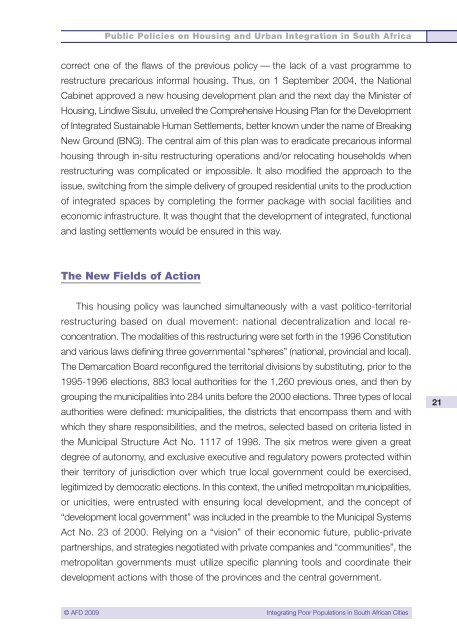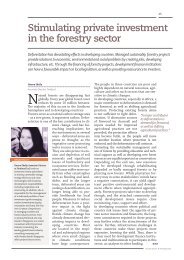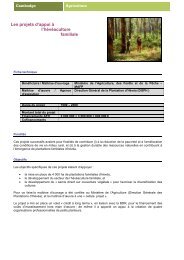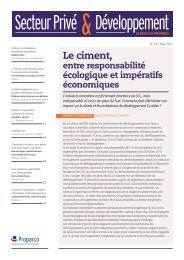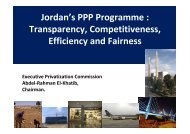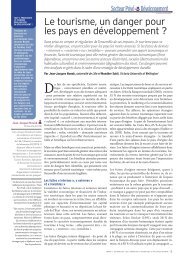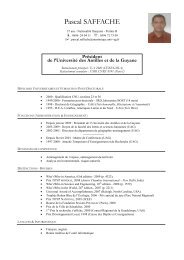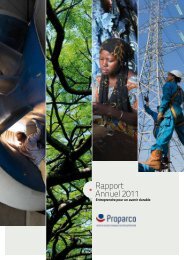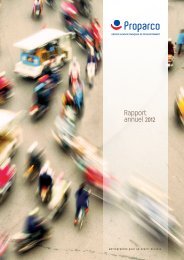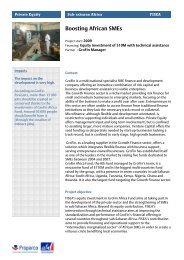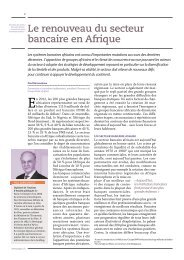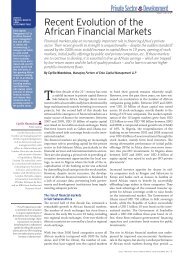Integrating Poor Populations in South African Cities - Agence ...
Integrating Poor Populations in South African Cities - Agence ...
Integrating Poor Populations in South African Cities - Agence ...
Create successful ePaper yourself
Turn your PDF publications into a flip-book with our unique Google optimized e-Paper software.
Public Policies on Hous<strong>in</strong>g and Urban Integration <strong>in</strong> <strong>South</strong> Africa<br />
correct one of the flaws of the previous policy — the lack of a vast programme to<br />
restructure precarious <strong>in</strong>formal hous<strong>in</strong>g. Thus, on 1 September 2004, the National<br />
Cab<strong>in</strong>et approved a new hous<strong>in</strong>g development plan and the next day the M<strong>in</strong>ister of<br />
Hous<strong>in</strong>g, L<strong>in</strong>diwe Sisulu, unveiled the Comprehensive Hous<strong>in</strong>g Plan for the Development<br />
of Integrated Susta<strong>in</strong>able Human Settlements, better known under the name of Break<strong>in</strong>g<br />
New Ground (BNG). The central aim of this plan was to eradicate precarious <strong>in</strong>formal<br />
hous<strong>in</strong>g through <strong>in</strong>-situ restructur<strong>in</strong>g operations and/or relocat<strong>in</strong>g households when<br />
restructur<strong>in</strong>g was complicated or impossible. It also modified the approach to the<br />
issue, switch<strong>in</strong>g from the simple delivery of grouped residential units to the production<br />
of <strong>in</strong>tegrated spaces by complet<strong>in</strong>g the former package with social facilities and<br />
economic <strong>in</strong>frastructure. It was thought that the development of <strong>in</strong>tegrated, functional<br />
and last<strong>in</strong>g settlements would be ensured <strong>in</strong> this way.<br />
The New Fields of Action<br />
This hous<strong>in</strong>g policy was launched simultaneously with a vast politico-territorial<br />
restructur<strong>in</strong>g based on dual movement: national decentralization and local reconcentration.<br />
The modalities of this restructur<strong>in</strong>g were set forth <strong>in</strong> the 1996 Constitution<br />
and various laws def<strong>in</strong><strong>in</strong>g three governmental “spheres” (national, prov<strong>in</strong>cial and local).<br />
The Demarcation Board reconfigured the territorial divisions by substitut<strong>in</strong>g, prior to the<br />
1995-1996 elections, 883 local authorities for the 1,260 previous ones, and then by<br />
group<strong>in</strong>g the municipalities <strong>in</strong>to 284 units before the 2000 elections. Three types of local<br />
authorities were def<strong>in</strong>ed: municipalities, the districts that encompass them and with<br />
which they share responsibilities, and the metros, selected based on criteria listed <strong>in</strong><br />
the Municipal Structure Act No. 1117 of 1998. The six metros were given a great<br />
degree of autonomy, and exclusive executive and regulatory powers protected with<strong>in</strong><br />
their territory of jurisdiction over which true local government could be exercised,<br />
legitimized by democratic elections. In this context, the unified metropolitan municipalities,<br />
or unicities, were entrusted with ensur<strong>in</strong>g local development, and the concept of<br />
“development local government” was <strong>in</strong>cluded <strong>in</strong> the preamble to the Municipal Systems<br />
Act No. 23 of 2000. Rely<strong>in</strong>g on a “vision” of their economic future, public-private<br />
partnerships, and strategies negotiated with private companies and “communities”, the<br />
metropolitan governments must utilize specific plann<strong>in</strong>g tools and coord<strong>in</strong>ate their<br />
development actions with those of the prov<strong>in</strong>ces and the central government.<br />
21<br />
© AFD 2009 <strong>Integrat<strong>in</strong>g</strong> <strong>Poor</strong> <strong>Populations</strong> <strong>in</strong> <strong>South</strong> <strong>African</strong> <strong>Cities</strong>


